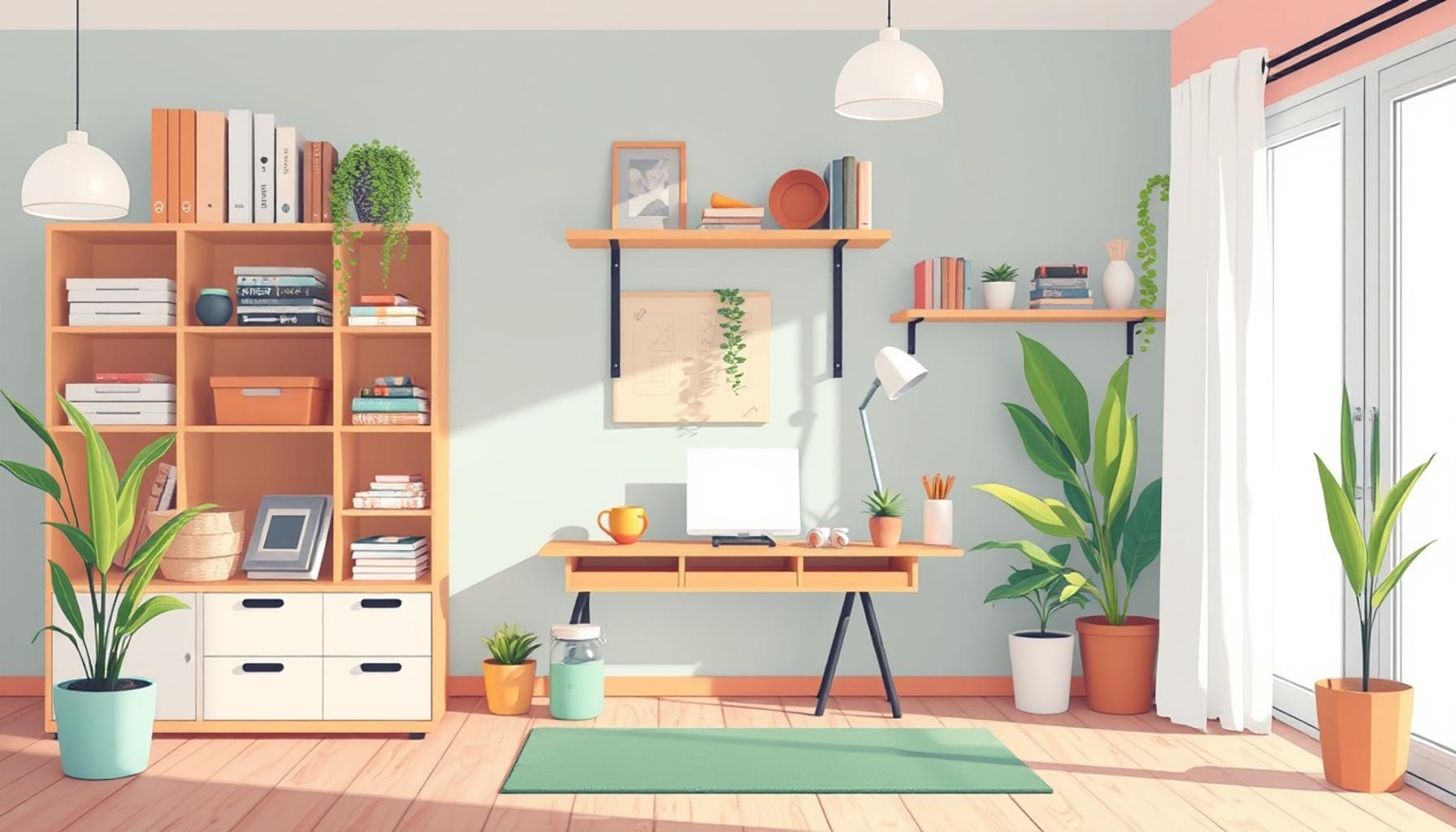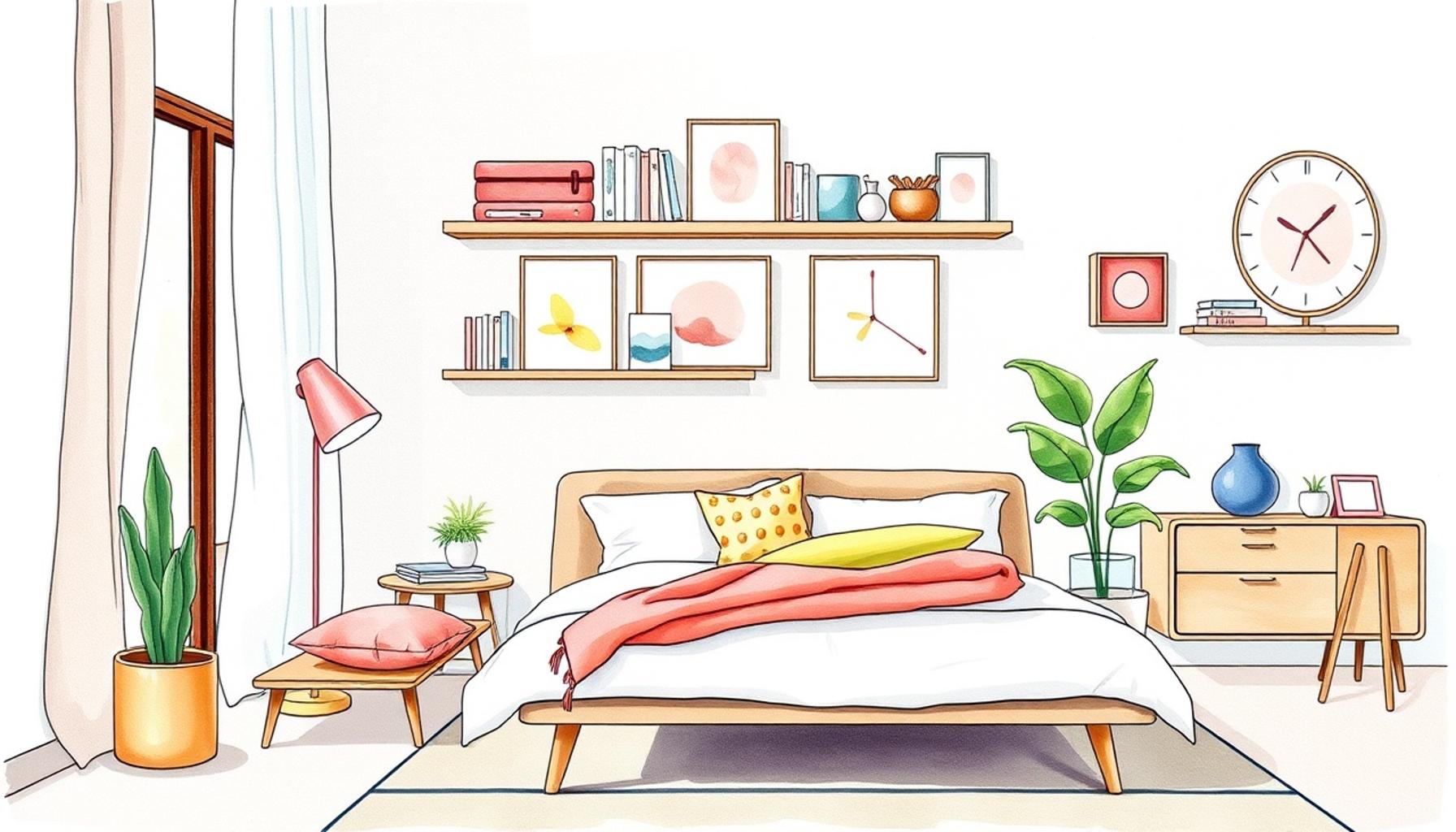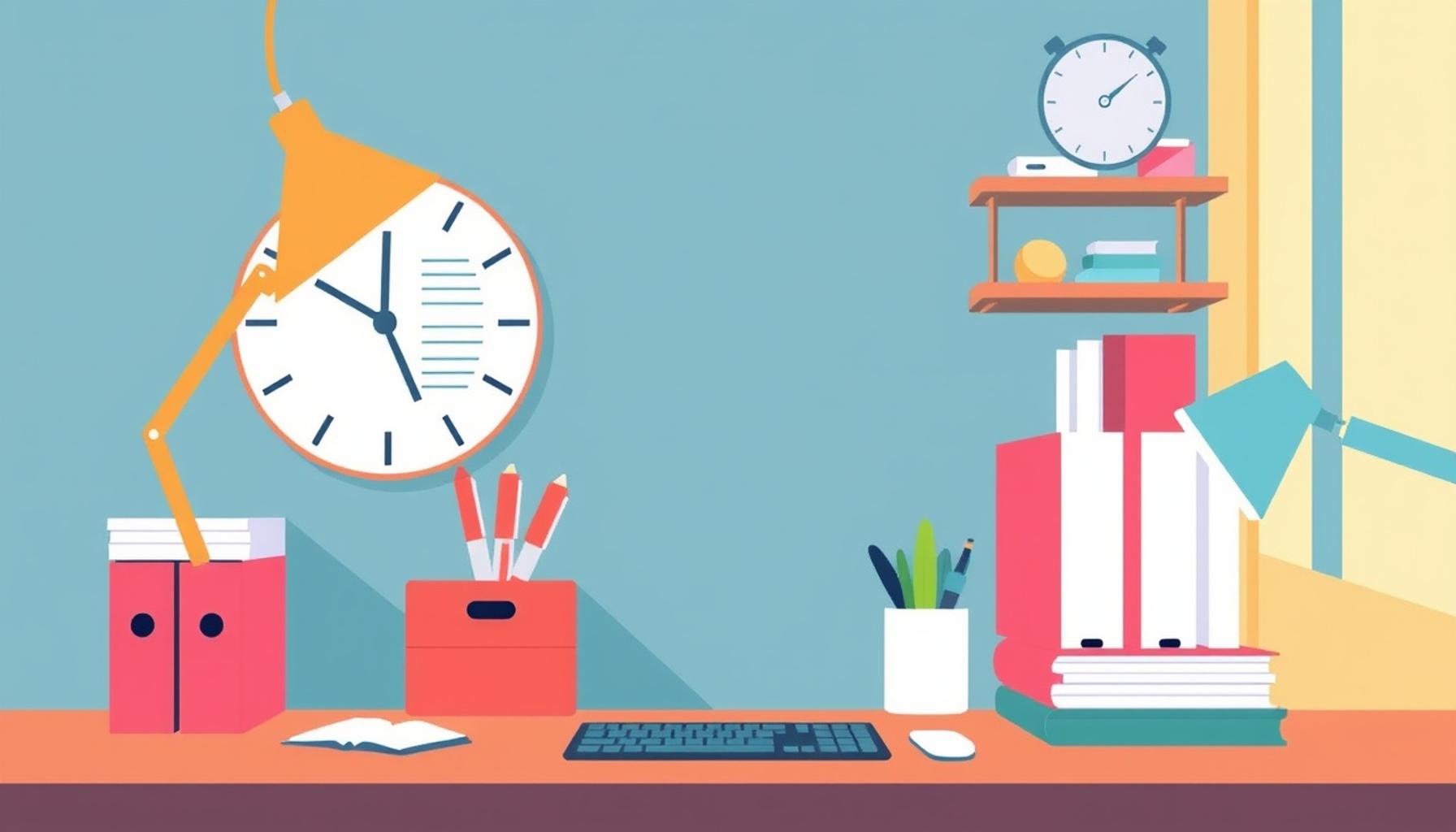Create a Minimalist Home Paperwork Organization System Easily

Embracing Minimalism in Paperwork Management
In an age where information is constantly bombarding us, the clamor of paperwork can become overwhelming. The reality of balancing bills, family documents, and work papers often leads to a chaotic filing system. However, adopting a minimalist home paperwork organization system can be a game-changer. By creating a structured method to manage your documents, you can alleviate both physical and mental clutter.
Why Minimalism Matters in Paper Management
Understanding the impacts of a disorganized space is crucial. Studies indicate that clutter can elevate stress levels. When your environment is filled with disarray, it diverts your attention and drains your energy. A minimalist approach not only promotes a more harmonious living space, but also serves practical purposes. Here are some benefits to consider:
- Reduce stress: A tidy environment reduces anxiety and allows greater clarity of thought. Imagine coming home to a clean desk rather than a pile of papers demanding your attention. The tranquility of an organized space fosters peace of mind.
- Save time: When your documents are categorized properly, locating important records such as tax documents or medical files becomes a breeze. According to a survey by Office Depot, 80% of people feel less productive due to disorganization, which translates to wasted time.
- Enhance productivity: Being surrounded by fewer distractions allows for improved focus. Refining your document management system can lead to better performance, whether working from home, studying, or managing your household.
Creating Your Personalized Paper Organization System
Transitioning to a minimalist paperwork system doesn’t require drastic measures. Start with effective categorization methods. For instance, you can classify documents into essential categories such as “Financial,” “Medical,” and “Personal.” Using labeled folders or a dedicated filing cabinet can visually streamline access to your files. Digital solutions, such as scanning important documents, can also reduce physical clutter while ensuring you always have the information at hand.
Utilizing tools and resources plays a significant role in maintaining order. There are numerous organization tools available, including productivity apps like Evernote or document management software that allows for easy categorization and retrieval of your paperwork. Moreover, utilizing an online calendar to track important deadlines related to bills or appointments can ensure you stay ahead of your responsibilities.
Maintaining Your Organization System
Creating an efficient paperwork system is only the beginning; maintaining it is equally important. Schedule regular intervals, perhaps once a month, to reassess your documents. Discard anything that no longer serves a purpose, such as outdated bank statements or expired warranties. Establishing a “one in, one out” rule can also help; for every new document you bring into your home, consider discarding an old one.

By taking small steps to implement a minimalist approach to paperwork, you will cultivate an environment that not only reduces stress but enhances your overall productivity. Embrace the clarity that comes with an organized workspace and take control over the mountains of paper that can so easily slow you down. Discovering this method will empower you to live a more serene and efficient lifestyle.
SEE ALSO: Click here to read another article
Building the Foundation of Your Minimalist Paperwork System
To create a minimalist home paperwork organization system, you must first establish a solid foundation that aligns with your lifestyle and needs. The journey begins with a comprehensive assessment of your existing paperwork. Take some time to sort through documents that are cluttering your home. Often, we hold onto paper we no longer need, which contributes to the overwhelming feeling of disorganization. Identifying these unnecessary items is crucial in the decluttering process.
Conducting a Document Inventory
Begin your paperwork organization by conducting a thorough inventory of all your documents. Ask yourself these key questions:
- What type of documents do I have? Categorize them into groups such as “Bills,” “Medical Records,” “Legal Documents,” and “Personal Correspondence.”
- Which documents are essential? Decide which items you need to keep for day-to-day living, like insurance policies and tax records.
- What can be digitized? Consider scanning documents to remove the physical copies, especially those that you rarely access but may be important to have on record.
This process allows you to visualize the extent of your paperwork and identify which documents serve a genuine purpose in your life. By downsizing and categorizing, you can reduce the emotional weight of clutter and improve your focus.
Implementing the Right Storage Solutions
Once you have a clear picture of your documents, the next step is to implement storage solutions that facilitate an organized, minimalist approach. Choose a dedicated space in your home for paperwork management, whether it’s a desk drawer, a stylish filing cabinet, or a digital storage platform. Here are a few suggestions to consider:
- File Folders: Use labeled file folders or hanging files to easily separate and access categories. Color-coding can further assist in quick identification.
- Document Boxes: For larger groups of documents, consider using attractive boxes that can serve both function and aesthetic appeal.
- Digital Options: Utilize cloud storage systems like Google Drive or Dropbox for digitized documents. This ensures that your important files are secure and accessible anytime, anywhere.
Using these storage solutions will help you maintain an orderly environment that aligns with your minimalistic goals. By prioritizing both function and aesthetics, you can achieve an organized paperwork system that enhances your living space.
Setting Up a Routine for Organization
Creating a minimalist paperwork organization system is not a one-time task. To maintain its effectiveness, develop a routine that promotes regular upkeep. Consider allocating a specific day each month to declutter your files and ensure everything remains in its designated spot. This intentional practice will greatly reduce the chances of future disarray, allowing your home to continue being a sanctuary of tranquility.
With these foundational steps, you can effortlessly steer towards a minimalist home paperwork organization system that not only simplifies your life but also promotes a sense of calm. Remember, the goal is not just to reduce papers but to cultivate an environment that fosters clarity and productivity in your daily activities.
| Advantages | Details |
|---|---|
| Simplified Access | A minimalist paperwork organization system allows you to find important documents quickly, reducing clutter and enhancing productivity. |
| Stress Reduction | By having an organized space, you minimize visual distractions, leading to a calmer mind where you can concentrate on more critical tasks. |
| Time Efficiency | Less time spent searching for documents means more time to focus on your work or personal projects, enhancing overall efficiency. |
| Improved Focus | An organized environment encourages a clearer mindset and boosts your motivation to tackle daily tasks. |
Creating a minimalist home paperwork organization system not only streamlines your workflow but also contributes significantly to your overall well-being. By implementing these advantages, you can transform your living or working space into a haven of productivity and peace. Take the first step today and discover how simple changes can lead to substantial improvements in your daily life.
CHECK OUT: Click here to explore more
Enhancing Efficiency with Your Paperwork Organization
Once you’ve laid the groundwork for your minimalist paperwork organization system, the next step is to enhance its efficiency. By implementing smart strategies, you can leverage the system to save time, reduce stress, and around less clutter. Here are a few effective methods to ensure you’re continually optimizing your paperwork management.
Adopting the One-In-One-Out Rule
To maintain organization and simplicity, consider adopting the One-In-One-Out Rule. This practice dictates that for every new paper you introduce into your home, an existing item must be disposed of or digitally archived. By doing this, you prevent accumulating unnecessary clutter and foster a culture of conscious consumption. This rule is particularly beneficial for maintaining balance in your paperwork organization system, keeping your space from transforming into a chaotic mess.
Leveraging Automation
In today’s technologically advanced world, there are numerous tools available that can help streamline your paperwork management. For instance, consider utilizing automated systems for bills and important reminders. Most banks and service providers offer digital payment options, which drastically reduce the volume of paper statements and bills cluttering your home. Moreover, apps like Evernote or Notion can help organize notes and documents, making it easier to access information on-the-go. By embracing these technologies, you not only minimize physical paperwork but also enhance your ability to organize digital files efficiently.
Creating a ‘To-Do’ System
Instead of letting paperwork pile up, establish a ‘To-Do’ System that outlines your immediate tasks. This could be as simple as a whiteboard in your workspace where you jot down tasks related to specific documents, such as ‘Pay Utility Bill’ or ‘Schedule Doctor Appointment’. When you see the tasks laid out visually, it becomes easier to prioritize. Additionally, you can pair this with a time-management technique like the Pomodoro Technique, where you set 25-minute focused work sessions followed by a 5-minute break to complete paperwork-related tasks.
Regularly Scheduled Review Sessions
Incorporating regular review sessions into your routine can make it easier to keep your paperwork organization system intact. Set aside time weekly or monthly to revisit your documents, and adjust if necessary. During these sessions, re-evaluate your files, ensuring each item still holds relevance. This process fosters a dynamic system that evolves as your life changes. For example, if your children are growing up, you might have to shift from keeping toddler health records to monitoring school reports. Additionally, this is a perfect opportunity to file away any documents that have been dealt with, making room for new items.
Utilizing Mobile Apps for Document Scanning
Another powerful companion to your minimalist paperwork organization system is utilizing mobile apps designed for document scanning, such as Adobe Scan or CamScanner. These applications allow you to digitize physical documents instantly, turning them into clear digital copies that can be organized in your preferred cloud storage or device. This practice not only reduces physical clutter but also offers added convenience when searching for documents, as digital files can often be found quicker than riffling through physical folders.
By enhancing the efficiency of your minimalist paperwork organization system through these techniques, you cultivate an environment that is effective yet simple, allowing your living space to reflect your desire for clarity and ease. As you implement these practices, you’ll not only streamline your existing processes but also transition your home into a haven of minimalism.
SEE ALSO: Click here to read another article
Final Thoughts on Creating a Minimalist Home Paperwork Organization System
As we navigate the complexities of modern life, the demand for an organized and efficient paperwork system becomes increasingly essential. Creating a minimalist home paperwork organization system is not merely about reducing clutter; it represents an opportunity to foster a lifestyle characterized by simplicity, clarity, and functionality. By implementing practices such as the One-In-One-Out Rule, leveraging automation, and incorporating mobile scanning, you are actively taking steps towards enhancing productivity while minimizing stress.
The beauty of a minimalist approach lies in its adaptability. Regular review sessions ensure your system evolves with your needs, allowing you to discard the obsolete and embrace the relevant. The integration of technology into this routine through apps designed for organization or scheduling can further enhance accessibility, enabling you to access important documents anytime and anywhere.
Moreover, adopting a ‘To-Do’ System ensures you remain focused, effectively transforming your paperwork from a source of anxiety into a manageable task. This mindset shift allows for a greater consideration of what truly matters, prioritizing meaningful documentation over unnecessary accumulation.
In conclusion, establishing a streamlined paperwork organization system is a journey rather than a one-time task. Embrace the changes, be gentle with yourself in the process, and remember that every small effort contributes significantly to a more serene home environment. As you gradually declutter and optimize your paper management, you pave the way for not just a tidy space but an enriched living experience that reflects your minimalist aspirations.



